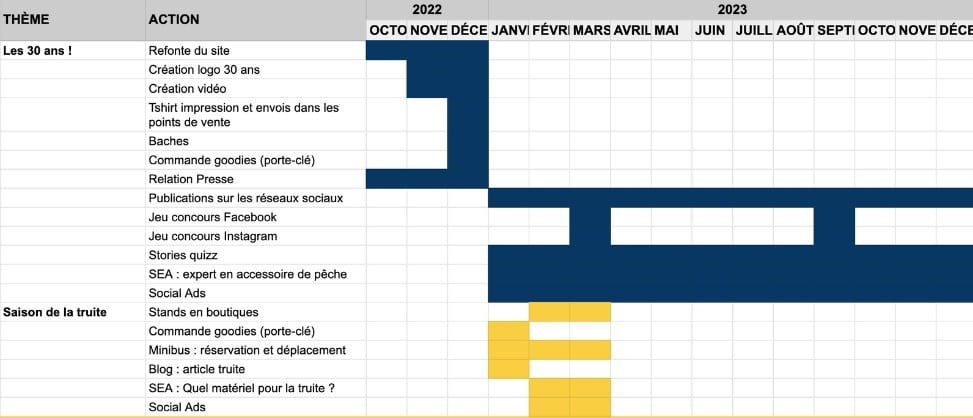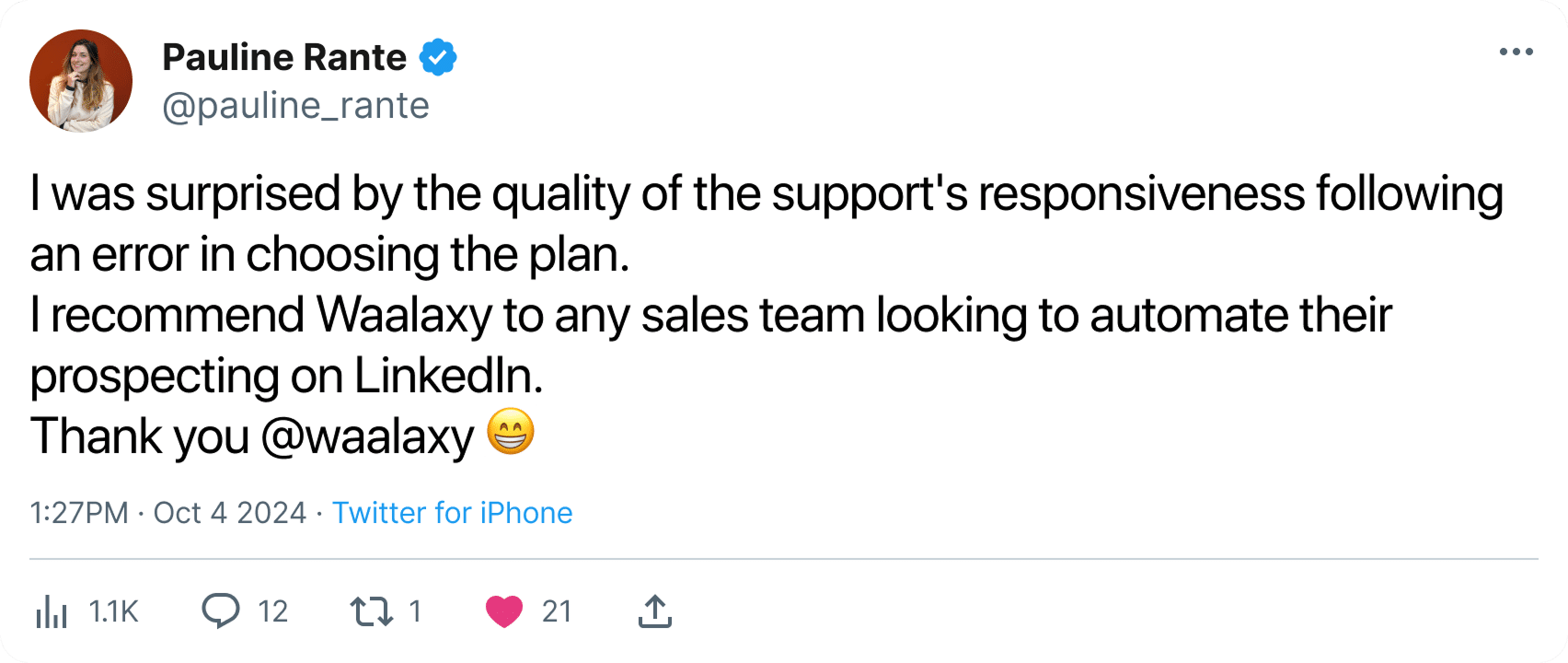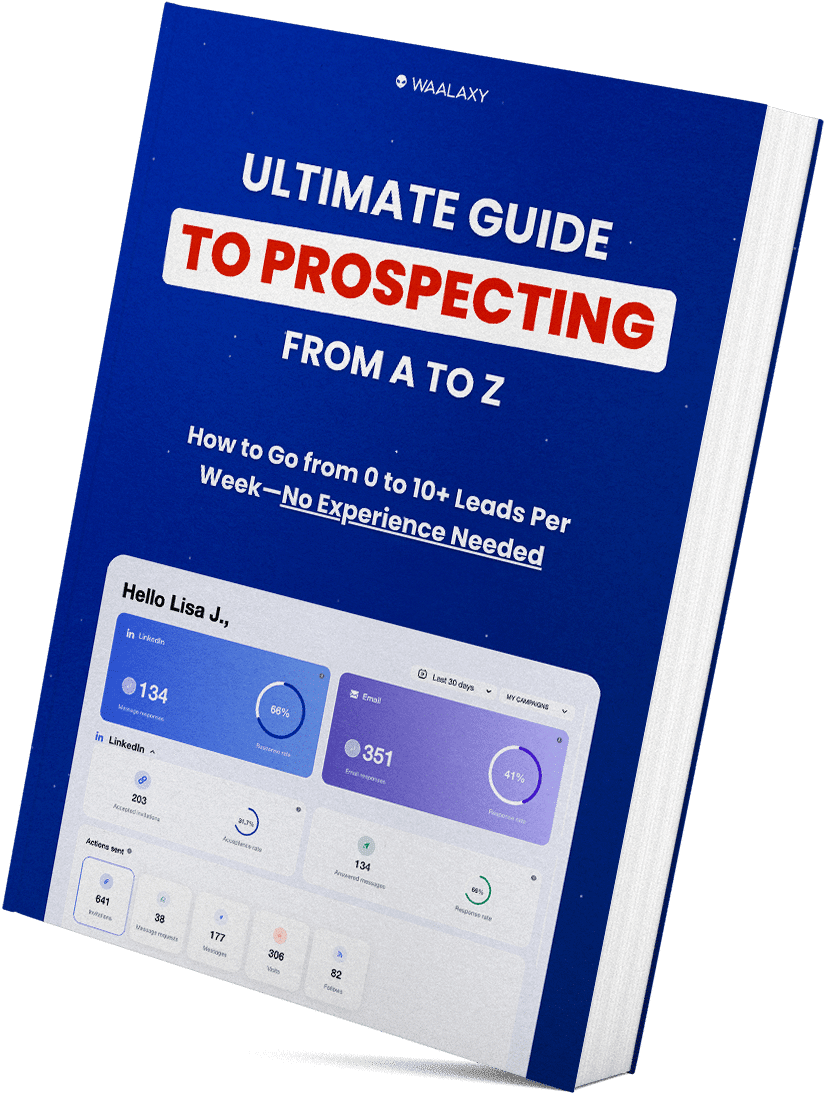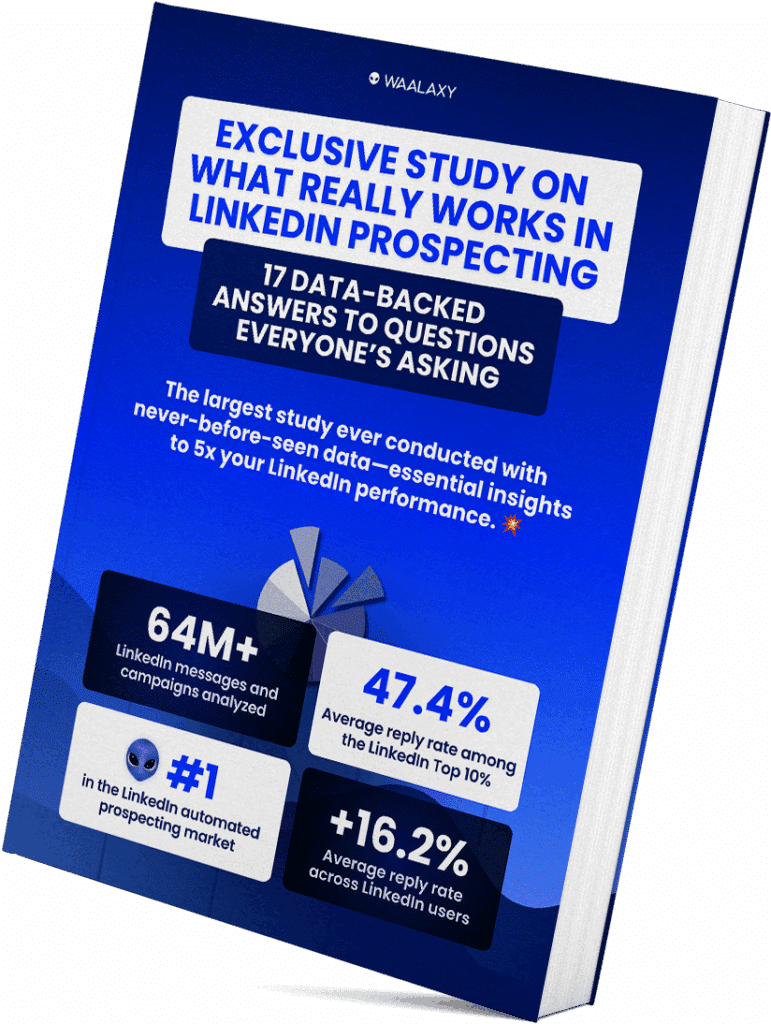The communication plan is the representation of your digital marketing strategy, in the form of a schedule, discover the example of communication plan that suits you best, in this dedicated article. 🤲 To guide you in the right direction, we ‘ve defined 9 steps to follow in order to set up an effective comm plan ! 🚀
What is a communication plan ?
A comm plan is a document that brings together your external and internal communications strategy , actions, action plan and budget . It guides you in creating your presence on the various social networks and media communication supports . 💻 It helps ensure the consistency of the message you want to convey to your audience, based on your objectives and the channels used, like your audience on LinkedIn for example. 📞
What is the content of the comm plan?
The content of the sample communication plan details the communication actions planned for the year or at N+2 . It defines for each action the objectives, budget, communication channels and messages to be broadcast on social networks, such as LinkedIn. 😉 It is used to optimize your KPIs to monitor your investments .
This template enables you to draw up an action plan for everyone in your company .
How to draw up an effective communication plan in 9 steps?
1) Define your sales target and create your buyer personas
The first step is to define your marketing target, because we don’t address expectant mothers in the same way as gardening enthusiasts … 🪴 We therefore need to know our target customers well , ideally better than they know themselves .
This exercise enables us to gather invaluable information to simplify all future communication actions as well as marketing , sales and customer relations planning . You’ ll know how best to meet their needs and be more precise in defining and delivering your message. 📣
Below is a non-exhaustive list of the information you can gather: 🔍
- Your target’s profile (age, gender, profession, salary).
- Interests, passions, hobbies.
- Problems, obstacles, frustrations he faces.
- His deepest motivations and emotions .
- Vocabulary, words and expressions used .
| TARGET | TARGET PROFILE |
| Gender | |
| Age range | |
| Profession | |
| Likes / passions | |
| Other information | |
| Problems |
👉 What’s more, creating your “buyer personas ” is an important step in the development of your sample communication plan . Defining your core target enables you to :
- Personalize your messages appropriately. For example , adopt a formal tone when speaking to investors.
- Find the right internal communication channels . For example, if you’ re targeting young people , favor social networks like Instagram or TikTok .
To do this, define all qualified prospects , all end-users and create typical profiles . It’s recommended to create 2-3 “personas” per service/product. 👍
2) Prepare your message
Now that you’ ve studied the different aspects of your ideal customer in depth , you need to make sure they understand your company and how your product/service can help them solve their problems. 🤔 And this is done by conveying a relevant message to your target audience through attractive “copywriting”, for example.
Here are a few characteristics of a “good message”: 👌
- It must be short and clear.
- It must use appropriate vocabulary (if your target is young, you may want to prioritize first-name over last-name).
- It should focus on the benefits of your product/service ( not the features) .
- It should subtly mention what differentiates your product from the competition .
Identify all your available content , including blog posts and/or infographics, videos you would have created and white papers . 📖
Anything that can add value to your content, can help you achieve your goal. 🎯 Take the opportunity to identify content categories, by creating an inventory of your content .
Example : if you have an article about recruitment in your growing business , 🤗 why not create an infographic that captures the key elements of your article ?
3) Choose your acquisition channels
Now that you know who your potential customers are , you need to choose the right acquisition channels to get your messages across . 📨
As a result, you need to ask yourself the following questions about your leads : 👇
- Which social networks do they spend the most time on ?
- What places do they frequent?
- Do they like to receive cold emails?
- Do they watch television ? If so, in what time slot ?
- What professional events will they attend ?
In addition, below you ‘ll find a ( non-exhaustive ) list of the different actions you can take depending on the communication channel you choose. 🤗
🌐For a digital communications strategy :
- Social networks : publications (photos, videos ), partnerships, influencers, interactions and comments.
- Emailing : promotional emails , content sharing .
- Blogging, content strategy : writing articles, infographics, etc .
✍️ For traditional communication strategies :
- Events : Participation in trade shows, organization of conferences.
- Media : advertising, radio commercials , press articles , etc .
Your company is unique , and so is your strategy ! Create a personalized corporate communications strategy tailored to your ideal customer , making your personal touches recognizable at a glance . 🌈
In addition, don’t forget to assess the cost of any action so you can allocate the right budget. 💲
4) Set a budget based on your needs
Setting a communications budget is no easy task . 😫 It must evaluate the costs of implementing your actions and ensure your company ‘s growth without incurring financial risks . Communication needs must not interfere with operational requirements (human, material or financial resources ) .
Generally speaking , communication costs should represent between 2% and 10% of your sales . Of course , this budget will depend on your product or service and the maturity of your business:
- 1️⃣ During the launch phase , the budget will be higher, as you ‘ll need to get your brand out there .
- 2️⃣ Then, in the maturity phase , once the product/service is known by its target audience, the investment will be lowed .
To maximize your visibility and reduce your costs , start with digital advertising . It’s much cheaper and easier to manage than non-media advertising. Marketing strategy is directly linked to the content of your message : tell your story and get your promise across to your potential customers . To be effective , develop a sample communication plan that is easily actionable. 💥
| BUDGET | ACTION PLAN |
| Comm channel n°1 | |
| Comm channel n°2 | |
| Comm channel n°3 | |
| Comm channel n°4 | |
| Budget action n°1 | |
| Budget action n°2 | |
| Budget action n°3 | |
| Budget action n°4 |
5) Plan your communication actions
The amount of content available will determine the frequency of publication. 🕰️ If your content marketing strategy consists of 2 blog posts and one video per month, your communication plan won ‘t go far.
You need to communicate regularly and provide value. That’s why you should have enough content to speak effectively .
A communication plan is a document that acts as an action plan . It communicates the strategy to the teams involved to ensure that everyone is on track. 🛣️
You can invoke your communication strategy based on various considerations you ‘ ve made in advance : your communication along is objectives , targets and budget.
Next, you need to list the actions to be taken . Detail them, estimate the budget allocated to their implementation, and the repetition of the action 🗓️ (e.g . writing one blog post per week) .

6) Distribute your content via networks
Certain means of communication, such as social networks , have become indispensable to your company’ s growth. However, you need to choose the right platform for your objectives: 🏹
- LinkedIn is an ideal platform for more formal communications and B2B prospecting . Professional social networks are particularly well suited to business development , “social selling” or customer research thanks to “lead scraper” tools 👽 like Waalaxy.
- Instagram is good for developing your « brand image ». Creating an account and publishing images on your network isn’t enough to get your brand noticed . You need to create your own style of photos, showcase your products in a unique visual way and be an ambassador for your company ‘s unique identity .
- Facebook is a social media giant with billions of users . It is indispensable for BtoC, especially for advertising products and services .
- Among other things… 🪐
7) Define clear objectives/KPIs
Next, you need to define clear objectives and “KPIs”. There are 4 main types of communication objectives : 🗣
- Increase brand awareness: promote your brand, product or new feature on social networks.
- Work on brand image : not everyone will be a customer, but we still want people to like our products and associate them with the positive aspects of our brand.
- Encourage ideal customers to take action: take their contact details from your website, visit a physical or virtual point of sale to facilitate purchase or redemption.
- Build customer loyalty : what’ s more , a happy customer can become an ambassador for your brand, and thus act at his or her level on your brand awareness, image and sales. 💰
8) Use project management tools
Preferably, plan your actions with a “retroplanning”, where you can see at a glance what ‘ s planned for the coming weeks or months . 👀

We recommend using a project management tool to facilitate the creation of communication plans . This will give you a clearer overview ( expenses, deadlines to be met, etc.) and the opportunity to align your vision with all stakeholders. 🤑
Here’s a selection of different types of software for your global communications strategy : 🧲
- Monday ➡️to plan your communication strategy .
- Tread by Qualtrics ➡️ to monitor your e-reputation.
- Podawaa ➡️ to manage your social network.
- WordPress ➡️ to start a blog.
- Waalaxy ➡️ for cold email campaigns.
- Canva ➡️ for graphic content creation.
9) Analyze the results
Making a great digital communications strategy only makes sense if you analyze the results and adjust your strategies as you go along. 📏 Here’s a list of some metrics to track :
- 🟣 Increase in sales, demo requests and number of quotes thanks to communication campaigns (displays, emails, etc.) .
- 🔵 Traffic on your website, bounce rate , time spent on each page, etc .
- 🟣Subscribers and reactions on your social networks . 😊
Alternatively, we can take the example of an email campaign (with Waalaxy), to which you’ve added call-to-action buttons to access a product or contact page . In this way, you’ll build up a prospecting database by sending this campaign to your list of prospects. 🧨
👉 You can then measure the impact of this campaign by analyzing the data in a dashboard:
- Open rate .
- Response rate .
- Number of messages sent.
- Engagement rate.
- Bounce rate.
- A/B testing.
There are so many, it’s up to you to define which are the most relevant. 🤓 This will enable you to quantify the impact of your marketing efforts and adjust them later , if need be .
Examples of corporate communication plans
Each communication channel and social network has its own peculiarities, so you need to adapt your communication plan template, accordingly. 🧐 In addition , the notion of personal profiles or company pages (especially on LinkedIn), must be integrated into this thinking. 🔔
Below, we’ll look at the example communication plan for LinkedIn, Twitter and Facebook companies. ⏰ You can download them later, from this Google Drive document, to transform them into PDF, Word or Excel formats. ⏬
Comm Plan To Download 🔥Example of digital communication planning – LinkedIn
For example, on LinkedIn ,if you have a well-developed content strategy , you need to organize the posts or articles you’re going to publish, by topic. 📚
You can group all posts about lead generation , in a ” Business Development ” category of your schedule. If you publish content unrelated to t his topic , we recommend that you create a new category and group them by subject . That way, you’ll be able to find your way around more easily. 🏃
Also note in the columns of your table, items like :
- Article title .
- Publication formats (bulleted list, videos, infographics, GIFs…).
- Status (to do, in progress, completed, overdue), objective, among others. 🪶
- And in the rows of the table :
- Week.
- The date.
- Two well-defined broad categories of posts/articles , one for your personal profile and the other for the company page (if relevant). 💫
Communication plan to download in PDF

Sample communication plan for Twitter
For Twitter, you can use the same template as for LinkedIn, when planning your communication actions . However , given that the number of publications must be greater on Twitter, I recommend adding 1 more line : the day of the week. 👀
This way, you’l l be able to see all your tweets, check the order in which they’re published and thus avoid duplicates . If you publish several times a day, this makes things easier . 👌

Communication plan for Facebook
For Facebook, you can create a communication plan in the same way as you do for LinkedIn or Twitter . 🕊️
For the columns : title of the article or post, theme, publication layout , status (to do, in progress, completed, overdue), objective, additional notes. 🖊️
And in the rows of the table : week, day, date, time… ⌛ it’s up to you how precise you want to be!
Use color codes to distinguish your actions! 🟢

Conclusion: How to build a communication plan?
In conclusion, your comm plan should be summed up in these few key points : 🗝️
- Define your target using qualified, segmented “personas “.
- Define your short- and medium-term objectives , making sure they are measurable and achievable.
- Define your actions , choosing your message and distribution channels carefully .
- Define your media budget for each activity according to your needs and objectives .
- Define your action plan and analyze your KPIs, to increase your chances of success. 💪
Ultimately, whether it ‘ s spreading the word, working on your “branding” or stimulating purchases from your target audience , communication is essential for your business. ⚡
In fact, your communication actions are the only way the outside world can get to know your company ‘s identity and values . So be careful to align “what you say with “what you do”.
Frequently asked questions
What are the elements of a communication plan?
Here are the various stages involved in drawing up your communication plan: 👇🏼
- 🟣 Analysis of the situation.
- 🔵 Definition of objectives.
- 🟣 Defining the target audience.
- 🔵 Choosing different communication channels.
- 🟣 Set up an editorial calendar.
- 🔵 Evaluate and analyze results.
Which tool for a communication plan?
There are several communication tools to help you plan, organize and execute your marketing communications strategy. I’ll give you my top 3 right away:
- 1️⃣ Hootsuite: if your communication plan calls for the use of social networks, this tool allows you to organize and automate the publication of your content on the various social media.
- 2️⃣ Canva: this is an excellent tool for the rapid creation of visual content such as posters, flyers and social network posts.
- 3️⃣ MailChimp: for email campaigns, this tool lets you create, send and analyze your campaign.
So, are you ready to plan your communication plan strategy ? 😏













